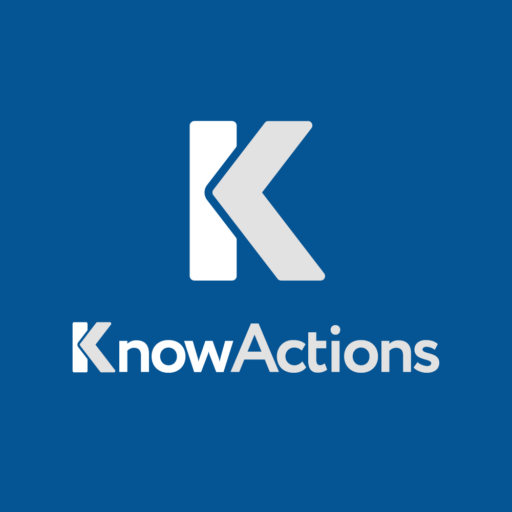Did you know that executives now spend a staggering 23 hours per week in meetings, up from less than 10 hours in the 1960s1? This dramatic increase in meeting time highlights a growing challenge in today’s workplace: balancing effective communication with productivity. As companies grapple with time management and meeting efficiency, it’s crucial to explore strategies for reducing unnecessary meetings without compromising team collaboration.
The rise in meeting frequency isn’t just a minor inconvenience. It’s reshaping how we work and impacting our ability to focus on deep, meaningful tasks. With research showing that meetings have grown in both duration and regularity over the past five decades, it’s clear that this trend is deeply ingrained in modern work culture1.
But there’s hope. Studies suggest that the sweet spot for meeting length is between 15 and 45 minutes, depending on the topic’s complexity2. This insight offers a starting point for rethinking our approach to meetings and finding ways to boost productivity hacks in our daily workflows.
As we dive into strategies for cutting down on meeting overload, remember that the goal isn’t to eliminate communication, but to enhance it. By implementing smart practices and leveraging technology, we can create a more balanced and efficient work environment that values both collaboration and individual focus time.
Key Takeaways
- Executive meeting time has more than doubled since the 1960s
- Optimal meeting length ranges from 15 to 45 minutes
- Meeting overload can lead to decreased productivity and innovation
- Regular evaluation of meeting effectiveness is crucial
- Balancing synchronous and asynchronous communication is key
- Implementing productivity hacks can significantly reduce unnecessary meetings
The Hidden Costs of Excessive Meetings
Excessive meetings pose a significant threat to Workplace Optimization and Time Management. The financial burden of these meetings is immense, with estimates suggesting a staggering $399 billion annually3. This highlights the urgent need for Effective Communication strategies within the workplace.
Impact on Employee Well-being
The increase in meeting frequency has led to longer workdays, with employees now working an additional 48 minutes daily3. This rise in work hours often results in stress and anxiety, negatively impacting personal relationships, performance, and health. Alarmingly, 64% of employees fear their tasks will accumulate while they’re away from their desks3.
Productivity Loss and Its Consequences
The impact of excessive meetings on productivity is stark. A significant 70% of meetings prevent employees from finishing their regular tasks4. Moreover, 91% of employees admit to daydreaming during meetings, while 39% have fallen asleep at least once3. This lack of engagement severely undermines Workplace Optimization efforts.
| Meeting Impact | Percentage |
|---|---|
| Employees daydreaming | 91% |
| Meetings keeping employees from work | 70% |
| Senior managers hindered by meetings | 65% |
Effects on Company Progress
The consequences of excessive meetings go beyond individual productivity. Companies lose valuable time for innovation and strategic planning. It’s estimated that 15% of company time is spent in meetings, yet only half are deemed necessary4. This misuse of time directly impacts a company’s ability to progress and compete effectively in the market.
To address these hidden costs, organizations must reassess their meeting culture. Implementing Time Management techniques, such as keeping meetings short and focused, can significantly improve productivity. Experts recommend aiming for an average attention span of about 18 minutes per meeting3. By prioritizing Effective Communication and streamlining meeting processes, companies can reclaim lost productivity and foster a more efficient work environment.
Signs You’re Having Too Many Meetings
Identifying the signs of excessive meetings is key to optimizing the workplace. A clear indicator is the absence of well-defined agendas, leading to meandering discussions and time wastage. Another red flag is when participants appear disengaged, indicating meetings may not fulfill their intended goals.
Longer project timelines often stem from too many meetings. Research indicates that switching between focused tasks and meetings can take up to 23 minutes to fully concentrate again5. This constant disruption significantly hampers productivity, with employees facing five interruptions daily, losing the equivalent of a full workday weekly5.
When meetings involve too many people, their efficiency declines. Typically, meetings exceed 9 attendees, and beyond that, the complexity of interactions diminishes effectiveness6. It’s advisable for organizations to cap meeting sizes to boost productivity and simplify decision-making processes6.
“Effective meetings are the cornerstone of productivity hacks in the modern workplace.”
To enhance meeting culture, consider a Meeting Audit. This strategy aids in pinpointing the purpose of various meetings, focusing on essential activities like project planning, collaboration, and decision-making6. Assigning clear decision-making roles can streamline processes and cut down on unnecessary debates, leading to more efficient meetings6.
| Sign | Impact | Solution |
|---|---|---|
| Lack of Clear Agendas | Unfocused Discussions | Implement Structured Agendas |
| Unengaged Participants | Wasted Time and Resources | Limit Attendees |
| Prolonged Project Completion | Reduced Productivity | Conduct Meeting Audit |
By tackling these signs and applying targeted solutions, organizations can notably enhance meeting efficiency and workplace optimization. Utilizing modern communication tools and adopting an ecosystem-based approach can further boost organizational effectiveness in managing relationships and productivity6.
The Rise of Meeting Culture in Modern Workplaces
Over the past half-century, the way we communicate at work has undergone a significant transformation. Today, executives spend nearly 23 hours each week in meetings, a trend that has been escalating for decades7. This increase in meeting time has profoundly altered our work dynamics and how we interact in professional environments.
Statistical Trends in Meeting Frequency
The data reveals a stark reality about our meeting-dominated culture. Workers lose over five days every year to meetings that lack clear objectives, while managers waste three days annually7. Moreover, poorly structured meetings in 2019 alone cost U.S. businesses a staggering $399 billion8. These figures highlight the pressing need for optimizing our workplaces.

Shift in Communication Patterns
With remote work strategies becoming more prevalent, companies are reassessing their communication approaches. Some firms have adopted asynchronous communication models, leading to enhanced clarity and focus among team members7. This shift reduces misunderstandings by enabling employees to refer to stored information rather than solely verbal discussions.
The COVID-19 Effect on Virtual Meetings
The pandemic has hastened the integration of collaboration tools, revolutionizing our approach to meetings. Virtual platforms have become vital for keeping teams connected despite physical distance. Yet, this digital transformation also has its downsides. Employees now spend about 31 hours monthly in meetings that fail to contribute to productivity8.
| Impact | Pre-COVID | Post-COVID |
|---|---|---|
| Meeting Frequency | Moderate | High |
| Virtual Meeting Usage | Low | Extensive |
| Employee Fatigue | Manageable | Significant |
As we move forward in this new work era, striking a balance between synchronous and asynchronous communication is essential. Adopting effective remote work strategies and optimizing collaboration tools can alleviate the drawbacks of excessive meetings. This approach helps in maintaining team unity and productivity.
Establishing Clear Objectives and Agendas
Setting clear objectives and agendas is crucial for enhancing meeting efficiency and managing time effectively. Research indicates that the pre-meeting phase is responsible for 80% of a meeting’s success, highlighting the significance of thorough preparation9. Without adequate planning, meetings tend to be unproductive, with nearly half being deemed ineffective9.
Effective communication begins with agendas that are well-structured. These agendas help minimize unnecessary meetings and ensure everyone understands the meeting’s purpose. By sharing agendas in advance, teams can collaborate asynchronously, thus saving time and increasing productivity9.
- Identify key objectives
- Ask for input from participants
- Break down the agenda into clear goals framed as questions
This method is supported by research showing a strong link between clear goals, staying focused, and team effectiveness. Indicators such as task performance and member satisfaction improve significantly9.
Well-structured meetings have a broader impact than just boosting productivity. The OECD discovered that “wasteful” meetings were the top obstacle to productivity, with 57% of respondents pointing to this issue10. By setting clear objectives and agendas, companies can overcome this challenge and notably enhance their meeting efficiency and time management.
Strategies for Limiting Attendees and Meeting Duration
Effective meetings are key to boosting productivity and managing time well. Many companies face the challenge of meetings that are long and unproductive, wasting both time and resources. To address this, adopting productivity hacks can greatly enhance meeting outcomes.
Implementing the “Two Pizza Rule”
The “Two Pizza Rule” is a straightforward yet effective method for controlling meeting size. It recommends limiting the number of attendees to 5-9, the amount that can easily be fed by two pizzas. This approach ensures smaller meetings, which are more productive, engaging, and time-efficient11.
Time-boxing Techniques
Time-boxing is a robust technique for managing time. It sets strict time limits for discussions and agenda items. This method keeps meetings focused and prevents them from going on too long. Efficient meetings are well-organized, involve only necessary participants, and achieve their objectives12.
Assigning Specific Roles in Meetings
Assigning roles can significantly boost meeting productivity. Key roles include:
- Facilitator: Guides the discussion and keeps the meeting on track
- Note-taker: Records key points and action items
- Timekeeper: Ensures the meeting stays within the allotted time
In decision-making meetings, roles should be clear: Decision makers decide, advisers offer input, recommenders suggest actions, and execution partners handle implementation13.
By adopting these strategies, companies can greatly enhance their meeting efficiency and productivity. Effective meetings require a well-chosen group, open discussions, and clear outcomes such as decisions, plans, or shared understanding of future tasks12.
| Meeting Type | Purpose | Key Considerations |
|---|---|---|
| Decision-making | Making and finalizing decisions | Clear roles, focused agenda |
| Creative solutions and coordination | Brainstorming and collaborating on innovative ideas | Diverse perspectives, open discussion |
| Routine updates and communication | Sharing information and aligning objectives | Concise updates, clear action items |
Embracing Asynchronous Communication
In today’s fast-paced work environment, embracing asynchronous communication is key. This method lets team members communicate effectively without needing real-time talks. It cuts down on meetings and boosts productivity14.
Asynchronous communication is a game-changer for remote and hybrid teams. It fits diverse work schedules, cuts down on interruptions, and supports a better work-life balance14. With job searches for hybrid and remote roles tripling in a year, this communication style is more vital than ever15.
Effective communication in an asynchronous setting depends on the right tools. Team messaging apps, project management platforms, and shared document repositories make information sharing smooth without constant meetings.
“Asynchronous work allows employees to structure their days around their most productive hours, leading to increased efficiency and higher-quality output.”
Implementing asynchronous communication needs a strategic plan:
- Assess current communication processes
- Develop a clear strategy
- Train team members on new tools and practices
- Gradually implement changes
By adopting asynchronous communication, organizations can cut down on burnout, boost productivity, and create a more flexible work environment15. This shift is especially good for global teams working across different time zones.
| Asynchronous Communication Benefits | Impact |
|---|---|
| Reduced interruptions | Enhanced focus and productivity |
| Flexible work hours | Improved work-life balance |
| Decreased meeting frequency | More time for deep work |
| Global collaboration | Efficient teamwork across time zones |
As teams adjust to new Remote Work Strategies, embracing asynchronous communication is crucial. It ensures Effective Communication and reduces the need for constant meetings and immediate replies1415.
Tools for Effective Async Collaboration
In today’s remote work landscape, async collaboration tools are vital for keeping productivity high and communication smooth. These tools let teams work across different time zones and fit into flexible schedules16.
Project Management Platforms
Platforms like Asana, Trello, and Jira provide strong features for tracking tasks and keeping everyone accountable. Trello stands out with its easy-to-use interface, offering a free version and paid plans starting at $5 per user per month1617.
Team Messaging Apps
Team messaging apps are key in cutting down on unnecessary meetings. Slack and Microsoft Teams work well with other productivity tools, making communication more efficient16. Yac, another messaging app, focuses on async communication to stop too many meetings17.
Collaborative Document Editing
Tools like Google Docs allow teams to work on documents in real-time, cutting down on the need for meetings. This approach supports flexible work flows and boosts team productivity16.
| Tool Category | Examples | Key Benefits |
|---|---|---|
| Project Management | Asana, Trello, Jira | Task tracking, accountability |
| Team Messaging | Slack, Microsoft Teams, Yac | Efficient communication, reduced meetings |
| Document Editing | Google Docs | Real-time collaboration, flexible workflows |
By using these collaboration tools well, teams can improve their remote work strategies and increase productivity. The key is to find a balance between synchronous and asynchronous communication. This keeps efficiency up without losing team unity16.
Balancing Synchronous and Asynchronous Communication
In today’s fast-paced work environment, finding the right balance between synchronous and asynchronous communication is essential. The COVID-19 pandemic has sped up the move to remote work, making companies rethink their communication methods18.
Synchronous communication, like real-time meetings, provides immediate interaction. On the other hand, asynchronous methods, such as email and project management tools, offer flexible communication and collaboration across different time zones18. It’s important to find the right mix to optimize productivity.
Studies indicate that fewer synchronous meetings can increase employees’ feelings of productivity and autonomy19. Asynchronous work allows for deep focus and encourages innovation by letting employees work at their own pace19. Companies like Flexport, with offices around the globe, heavily rely on asynchronous communication to manage different time zones effectively19.
To achieve a balanced approach:
- Define clear objectives for each communication type
- Use tools like Slack or Microsoft Teams for instant messaging with asynchronous capabilities
- Implement project management platforms such as Asana or Trello for task tracking
- Set expectations for response times (e.g., within 24 hours)
- Encourage open communication and adapt methods to team preferences
By thoughtfully combining synchronous and asynchronous communication, organizations can enhance remote work strategies, improve meeting efficiency, and create a more productive work environment1819.
Building Trust and Accountability Among Team Members
Creating a culture of accountability is essential for optimizing the workplace across various sectors. When team members own their tasks, productivity surges, and the work atmosphere becomes more positive20.
Accountability among teams means each member is committed to meeting shared goals. This approach promotes autonomy and responsibility, key for better communication and handling remote work20.

Team accountability brings numerous benefits. It leads to better performance, builds trust, and enhances collaboration. It also sparks innovation, reduces conflicts, and boosts employee engagement. These outcomes are crucial for a well-optimized workplace20.
To promote team accountability, several strategies can be employed:
- Clarify goals and objectives
- Build personal relationships
- Strengthen communication
- Schedule regular one-on-ones
- Create a responsibilities chart
- Provide necessary resources and tools
Project management software can help in efficiently tracking tasks and milestones, supporting effective communication and remote work strategies. Regular meetings are essential for discussing project updates and ensuring alignment with company objectives21.
A robust accountability culture attracts and retains top talent. It also supports personal growth by encouraging adaptability and pushing beyond boundaries. Accountable employees motivate others to strive for excellence and complete tasks efficiently21.
| Accountability Benefits | Impact on Workplace |
|---|---|
| Increased trust | Fosters collaboration |
| Higher productivity | Achieves company goals faster |
| Better communication | Reduces misunderstandings |
| Employee satisfaction | Improves retention rates |
By adopting these strategies and nurturing a culture of accountability, organizations can enhance their workplace. They can improve communication and successfully manage remote work, leading to a more efficient and productive environment.
Reducing Unnecessary Meetings: A Step-by-Step Approach
Reducing unnecessary meetings can greatly enhance Meeting Efficiency and save companies millions. A 100-person company can save nearly $2.5 million annually by cutting out unproductive meetings. Similarly, a 5,000-person organization can save over $100 million22. Let’s delve into a systematic approach to achieve this goal.
Auditing Current Meeting Practices
Begin by examining your meeting landscape. Research indicates that remote meetings per employee surged by 60% in 2022 versus 2020, with nearly one-third deemed unnecessary2223. Assess meeting frequency, duration, and effectiveness to pinpoint areas for enhancement.
Setting Team-wide Meeting Reduction Goals
Establish specific, quantifiable goals for decreasing meeting time. For instance, Shopify eliminated about 10,000 events from employees’ calendars by canceling recurring meetings with three or more participants22. Consider adopting Time Management strategies like “meeting-free” days to boost productivity.
Implementing and Monitoring Changes
Execute your plan and monitor its effectiveness. Adopt Productivity Hacks such as asynchronous meetings and chat tools for real-time messaging and file sharing23. Regularly evaluate the impact of these changes on team performance and make necessary adjustments.
“Focus Fridays have been a game-changer for our team’s productivity.”
By adopting this method, you can significantly cut down on unnecessary meetings and foster a more efficient work environment. Remember, 84% of Slack employees found Focus Fridays beneficial in a pilot program22. With meticulous planning and execution, your team can also experience similar outcomes.
Adapting to New Ways of Working
The modern workplace is undergoing a significant transformation, with remote work strategies and collaboration tools leading this change. Organizations are adopting new technologies and practices to streamline their operations and enhance communication. In the United States, an estimated 11 million meetings are held daily, amounting to over 1 billion annually24. This figure underscores the importance of optimizing the workplace and refining meeting practices.
Embracing Remote Work Tools
Remote work tools are now vital for businesses navigating new work landscapes. These tools facilitate effective collaboration across distances. Notably, 92% of workers multitask during virtual meetings, pointing to a need for more engaging online collaboration methods24. Utilizing AI-powered tools for meeting insights and recording discussions can boost productivity and ensure crucial information is captured.
Fostering a Culture of Flexibility
Adopting a flexible work culture is key to adapting to new work paradigms. This approach acknowledges that employees have varied peak productivity times and work styles. Interestingly, 67% of employees feel that excessive meeting time hampers their productivity25. By promoting flexibility, organizations can help team members balance focused work with collaborative efforts, enhancing overall productivity.
Continuous Improvement in Communication Strategies
To excel in the evolving workplace, organizations must continually enhance their communication strategies. This entails regularly evaluating communication needs and practices. With only 30% of meetings considered productive, there’s ample room for improvement24. Companies can improve communication by creating action item lists for post-meeting sharing and implementing feedback mechanisms to assess meeting effectiveness. By embracing change and new collaboration tools, businesses can optimize their workplaces and elevate team performance in this new era of work.





